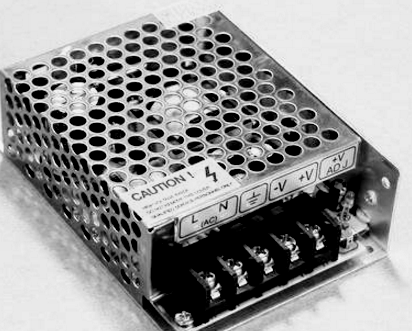Four switching power supplies common fail and repair skills
Switching power supply is an indispensable component of various electronic devices. Its performance is directly related to the technical specifications of electronic devices and whether it can work safely and reliably. Since the key components inside the switching power supply work in the high-frequency switching state, the power consumption is small, the conversion rate is high, and the volume and weight are only 20%-30% of the linear power supply, so it has become the mainstream product of the regulated power supply. The maintenance of electrical faults in electronic equipment, in the principle of easy to difficult, basically starts with the power supply, after determining that the power supply is normal, and then repairing other parts, and the power failure accounts for most of the electrical failure of the electronic equipment. . Therefore, understand the basic working principle of the power supply at the beginning, familiar with its maintenance skills and common faults, which will help shorten the maintenance time of electronic equipment and improve the maintenance skills of personal equipment.

1. No output, normal fuse
This phenomenon indicates that the switching power supply is not working or has entered the protection state. First, it is necessary to measure whether the starting pin of the power control chip has a starting voltage. If there is no starting voltage or the starting voltage is too low, it is necessary to check whether the starting resistor and the external component of the starting pin are leaking. At this time, if the power control chip is normal, the above check is performed. You can quickly find the fault. If there is a starting voltage, then whether the output of the control chip has a high or low transition at the instant of power-on, if there is no jump, it means that the control chip is bad, the peripheral oscillator circuit component or the protection circuit has a problem, and the control can be replaced first. Chip, then check the external components; if there is a jump, the switch is generally bad or damaged.
2. The fuse is burnt
Mainly check the large filter capacitor on 300V, the diodes of the rectifier bridge and the switch tube, etc. The problem of anti-interference circuit will also lead to burn-in and blackout. It should be noted that the burnout will generally burn the current sense resistor and the power control chip due to the breakdown of the switch tube. The negative temperature coefficient thermistor is also easily burned out together with the insurance.
3. There is output voltage, but the output voltage is too high
This type of fault typically comes from regulated sampling and voltage regulation control circuits. In the DC output, sampling resistor, error sampling amplifier such as TL431, optocoupler, power control chip and other circuits together form a closed control loop, any problem will lead to an increase in output voltage.
4. The output voltage is too low. In addition to the voltage regulator control circuit, the output voltage is low. There are some reasons below that cause the output voltage to be low:
a. The output voltage terminal rectifier diode, filter capacitor failure, etc., can be judged by the substitution method.
b. The performance of the switch tube is degraded, which will inevitably lead to the switch tube not being able to conduct normally, which will increase the internal resistance of the power supply and reduce the load capacity.

